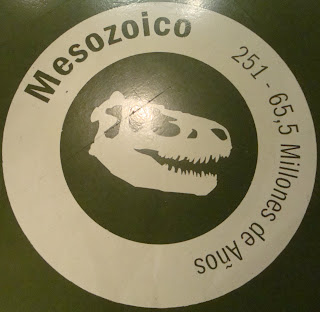Proof of all this is the wide range of fossils exhibited in its rooms.
1. Begining with Ediacaran-630 million years ago (The Ediacara Hills, Australia, gave a name to the entire "Ediacara biota" of the late Precambrian. )
The stylized fossils from the Ediacara Hills, do look, more or less, like this :
The first one is named Arkarua, and is believed to be the oldest echinoderm;
the second, Tribrachidium heraldicum- its affinities are still mysterious;
the third, Spriggina, is a possible relative of the arthropods
2. PALEOZOIC-542million years ago
The Palaeozoic Era lasted 291 million years.
For much time life took place in the sea. The climate was warm and wet, although it became more arid at the end of the period.
During the Paleozoic, the lands that had emerged formed large islands, which came togethere and finally formed a great supercontinent called PANGAEA (Pangea)
The first insects, amphibians and reptiles appeared.
3. MESOZOIC-251 million years ago
It is divided into three periods: Triassic, Jurassic and Cretaceous.
Pangea fractured and the continental plates followed their independent drifts, coming close to their current location.
The first mammals appeared on the Earth' s surface.
This was also the era of large reptiles and Dinosaurs
4. CENOZOIC- 65,5 million years ago.
It is divided into three periods : the Paleogene, Neogene and Quaternary.
In this era the Continents reached the current positions.
This is the era of a great expansion of the mammals.
(to be continued)








No comments:
Post a Comment